Behind the Lens
Photomontage Maestro: Thomas Barbèy
Published
1 year agoon

Using a Mamiya RB67 and several old Canon AE1 cameras, Thomas Barbèy (pronounced Barbay) creates the raw materials to manufacture his own artistic uni verse. Working in photomontage, images are crafted using whatever tools are necessary, from multiple enlargers to scissors to airbrush. Once completed the originals are rephotographed and released in limited editions, unlimited editions, posters, books, and even puzzles. A citizen of the world, Thomas Barbèy has lived in many foreign countries and is currently living in Las Vegas working as a fine art photographer. Wherever he lives, you can bet that Barbèy will be shaping the world to his vision and sharing it with a growing audience.
Focus: Your style seems to be unique. Can you tell us a bit about it?
Thomas Barbèy: What I do is photomontage. It wasn’t invented by me. It has been going on for 40 or 50 years. The only difference, which I find really important, is that the titles become an integral part of the piece.
Focus: Why are titles important to your work?
TB: It gives a different twist to the image. The titles are usually thought provoking, sometimes humorous. In some pieces the meaning I attach to the work would probably be lost without the title. Take the image of “Sowing the Seeds of Love.” If I didn’t give it that title, it could just be some guys hanging up in the air throwing pixie dust or something. But not all my images are like that. “O Duomo Mio” and “Tourist Trap” would work without their titles; those images speak for them selves. I have an image, “A Short Cut to China” in which a boat is going into a hole made with the help of my grandfather’s negatives of the QE 2. A lot of people look at it and say, “that’s scary . . . it’s the Titanic . . .” If they read the title they’d un derstand it’s like Magic Mountain or something. You’re going down a hole to get to Hong Kong on the other side. It’s funny because it seems like the scarier pieces are the ones that sell the best. Although I have to admit that I look at the work of a lot of other talented artists that do monsters and scary images and I wouldn’t hang their work on my wall. It’s the same thing with nudity. I love the human body but I don’t do nudes. I think the eroticism of the body interferes with the art for me.

Focus: How did you get started in photography?
TB: Well, I was living in Milan. An English speak ing person in Italy tends to meet a lot of other English speaking people. The ones I met were all involved in the fashion business. I dated a girl who happened to be a model. I would look at her book and see the photos other guys took of her and I kept seeing the mistakes. Bad light ing, shadows, bags under the eyes. I started to notice the important things like playing with light. I started taking pictures of my girlfriend and I were better than the other photographers. My income at this point came from the music busi ness, I was kind of a pop idol. Photography was a hobby. Then I started doing magazine work and eventually opened my own studio. I bought a soft box and did a lot of studio photography, which is a lot more complicated than working outdoors. I don’t work in the studio any more, it’s very techni cal and you need really good equipment. I praise the guys who do it. I started working mostly in color, but also black and white. I used Kodak in color. For black and white I used Ilford. I still do. I started doing a lot of testing with both girls and guys and from there I started photographing for fashion magazines. I went to the lab on a regular basis and that’s when I started getting into black and white and experimenting with multiple enlargers. There aren’t too many black and white pictures of sunsets. I know you can make a beautiful sunset photo in great colors but in black and white it would fall flat. Think about the portrait from the cover of National Geographic a few years ago, the one of the Afghan girl. Those beautiful eyes! In black and white it would have been lovely, but not stunning. So in black and white you have to have great content in the image because the color is not there to help out. I eventually realized that the fashion world was very political. I wasn’t too keen on that because primarily I like the creative side. I wasn’t convinced that the best photographers were the ones making a living from photography.

Focus: You create new realities in your photos. Is this because you are an optimist who thinks the world is great but could be a little better, or is it because you are a pessimist who thinks the world could only get better?
TB: I can’t say that I am a happy person because happiness is an illusion. You live your life and try to collect as many of these moments as you can because they don’t last. You’re happy, then the phone rings and you get bad news and you are not happy any more. Am I happy? Sure, I am healthy but to say you are happy is an illusion.
Focus: Where were you first exhibited, Europe or in the States?
TB: It was in the States. I came back to the U.S and to reinvent myself as a photographer/artist. When I was very young, my mother had an art ist friend who kept saying I was very talented. I thought it would be something I could do later on in life. I’ve been doing photography for over 20 years, but haven’t really exhibited that long. I started doing art shows in America and saw the reaction of people in the streets. What I liked about the fine art world was that people looked at your work and they either liked it or didn’t. Each individual decides whether or not to buy a piece. You can talk about it, you can explain the process, but you can’t tell the guy, “Buy my piece of art.” There are two parallel markets to exhibit and sell photography. There are the pres igious mainstream galleries where everybody comes and drinks champagne at the openings, but they don’t sell much. Then there are street fairs where photographers go and sell a bunch like massive amounts. There are photographers mak ing a lot of money from the two different sectors. So, I started in the streets and I’m doing gallery shows now.
Focus: Are sales a validation of your art?
TB: It’s very gratifying to sell a piece. I have spoken to a number of artists and they never get tired of selling. It becomes an addiction. Whether you sell 100 or 10,000 whatever the price it’s the sale that’s exciting. I don’t want to say it’s only a business, but it’s exciting because you want to see how far it can go. Many galleries are more interested in your résumé than the actual art. You can pooh pooh art shows but I will tell you one thing about art shows. No one ever asks about your résumé. Nobody cares. If they like the work they buy it. If not, they don’t. I find that immediate response to be very valuable. You get validation for your work on the spot. You can start in the street shows and learn what works and touches people, how to tweak your work. It’s the best school there is. Best place for the artist to interact with the art collector. When you start selling the galleries will come after you. It’s incredible; now I’m exhibited in over 100 galleries.
Focus: How do you react to people reacting to your work?
TB: I get a little sensitive about the technical side of the work. The first thing out of many people’s mouths is some question about how I do the work. The first time someone asked I didn’t mind, but over the years hearing the same question over and over again becomes a burden. I have noticed that most of the people who are really into the art don’t care about that technical side; they either like it or they don’t. I really enjoy the people who like my artwork. About 99 percent of the time they are interesting people. I notice that people who stop and look at my stuff are educated and literate and have something to talk about.
Focus: Do you think of how your work will be viewed in 50 or 100 years?
TB: I look at an artist based on their whole body of work. Take René Magritte, or Picasso, people tend to know a lot of their work. Joel Peter Witkin is very constant in his work and is not just known for one image. Michael Kenna is the same way. Every Kenna I see makes me say, “Wow!” These are people who know what to keep and what to throw in the trash. They make sure everything they show is worthy of carrying their name.
Focus: Tell us about your visions and style.
TB: I try to remain true to my vision, to my style, but always try doing something different. Going back to my image of the boat going down the hole, I could do another image with people or a car falling down the hole. That would be repeating myself and it would be a cheap shot. If I’m doing that I’m not exploring different avenues, continue trying to break new ground. I can create a variety of images and content within the style and still stay true to my underlying vision.
Focus: Why do you choose to create in the dark room, when it would be easier to do montage in Photoshop?
TB: Easy is relative. For me it’s easy to do this in the darkroom where I enjoy doing all my own work, laying everything out by hand.
Focus: Can you explain what you mean by the “so what” factor?
TB: Sometimes I get really excited about my work. Then I show it to my wife, or some other person who is detached from the work. If that person says, “So what,” then you start to think that may be this piece is not so exciting. On the other hand, if I’m not crazy about a piece of work but every one else flips out then it becomes worthy. When you’re doing the work, you think it’s really cool, you think of the technique involved, the lighting or some other factor that doesn’t actually show up in the final image. People don’t care about the technique. They see only the finished image that creates an emotion or affects them in some way. If you show the picture around and no one is impressed you know it’s a “so what” image and you should deem it not worthy and not put it in your collection. I have had a lot of work that has ended up in the trash. My website only has 36 images. Does anyone think that’s all the photos I have done? Someone emailed me the other day and excitedly told me they had this rare, unseen M.C. Escher, they wanted to sell me for, like, ten grand. It was found in Escher’s garage or some thing. Well, that’s probably a piece Escher didn’t think was worthy. I am not interested in the ones he didn’t want to show.
Focus: You speak of being influenced by Escher and Magritte. Are there other influences you can share?
TB: Philippe Druillet, a Belgian. I love Sandro del Prete. Another brilliant artist is Rob Gon salves. Two other guys I like are Vladimir Kush and Octavio Ocampo. Many painters, but most photographers don’t know them. I believe that every artist is stimulated by other artists and have to admit that my inspiration comes more from painters than from photographers. I enjoy photography but get more inspired by paintings. I love the surrealists. There is no way you can redo something using photography that has been painted. For example, M.C. Escher did that paint ing of the creepy monster going up the stairs. I can’t photograph that monster because it doesn’t exist. Therefore, I did a tribute to Escher with all these stairs called, “Looking for My Doll.” In stead of the monster, it has a little girl walking up and down the steps looking for her doll. I photographed a little doll and hid it in the stairs. It becomes like a Where’s Waldo picture. My point is that the Escher inspired me but I did it with my own twist.
Focus: Are you asked about Jerry Uelsmann and Scott Mutter since your work is similar in style?
TB: People say, “You must be a fan of Jerry Uelsmann and Scott Mutter.” Scott Mutter has some very interesting ideas. I think Jerry Uelsmann’s images are beautiful. I am more a fan of other photographers, like Michael Kenna, who do work that is a lot different from mine. Kenna can get up at 4 a.m. and wait for the water to be perfect under a bridge or something like that. I don’t have that sort of state of mind.
Focus: You sell your photos in both sepia toned versions and black and white. Why do you present them in two different ways?
TB: The sepia toned prints are limited editions. They are numbered and signed and a lot more expensive than the black and white prints which are unlimited and unsigned and designed as a different, more affordable product.

Focus: Is there anything you would like to say to aspiring artists?
TB: You have to have the courage to throw away any image that is not worthy. I have seen too many photographers who don’t have that courage because of the almighty dollar. They take pictures of a cute dog and think some dog lover will want it. You have to keep saying, that photo is going to be linked to my name. Don’t ruin your name just for a little money. I made mistakes in the music business that I won’t make in the art business. I did a lot of commercial music and it taught me what not to do. I don’t want to go there in the art world. I had an image called “Rhinal Congestion.” Some guy came in and bought it because he collected anything with Rhinos. He didn’t really care about the image but he had to have it because of this strange tie in. So you can get lucky in photography and sell an image or two because of people like the Rhino guy, but if you sell a lot of posters or an edition you know you are onto something. There is this myth that people have to be sad, tormented and upset in life to be more creative. I’m middle class and, as a matter of fact, I think being sane and healthy is a good thing.
For more information on Thomas Barbèy’s prints, please visit www.thomasbarbey.com.

You may like
-

TOMAAS: Bridging Realms of Surrealism and Post-Humanism
-


Nick Brandt’s “SINK / RISE” at Atlas Gallery: A Profound Dive into Environmental Realities
-
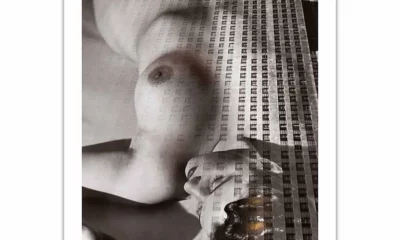

Studies of the Female Nude: Exploring the Artistic Legacy of Andre de Dienes
-
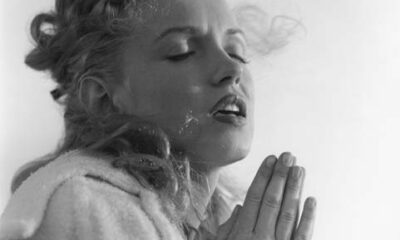

Capturing Timeless Beauty: Andre de Dienes’ Iconic Journey through Photography
-


Exploring the Human Form: The Artistic Journey of Connie Imboden